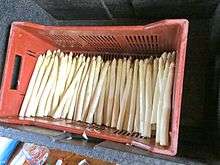Upper Bavaria
Upper Bavaria (Oberbayern) is the Bavarian heartland. It's a place of deep forests, beautiful meadows, winding roads and jagged peaks. Upper Bavariais full of festivities. Every few weeks there is another annual fest or event in some town or city. The best time to visit would be August and September when the weather is most predictable and the beer gardens are in full swing. The folks in this region have a good balance of hard work, socializing, playing and just relaxing. But don't expect to notice this all in a quick visit, you need to stay for a while to really understand.
Cities
- 🌍 Munich (München) — the capital of Bavaria, known for the annual Oktoberfest
- 🌍 Ingolstadt — large city with gothic and baroque architecture styles
Towns
- 🌍 Bad Kohlgrub - small skiing resort and spa
- 🌍 Bad Reichenhall — a small spa town in the Bavarian alps near Salzburg
- 🌍 Berchtesgaden — A picturesque and historic town in the Bavarian alps near Salzburg, ski and summer resort
- 🌍 Dachau — site of the first Nazi concentration camp in Germany and a nice old town worth seeing
- 🌍 Erding - famous for its Weissbier brewery and Europe's largest spa & sauna area
- 🌍 Freising - an old bishop's town; Munich International Airport is located here
- 🌍 Garmisch-Partenkirchen — see the highest mountain in Germany (Zugspitze) at this ski resort south of Munich; it has also hosted the Olympic games
- 🌍 Ismaning - large village north east of Munich.
- 🌍 Murnau - town on the Staffelsee
- 🌍 Oberammergau — famous for painted houses, wood-carved sculptures and the decennial passion play
- 🌍 Rosenheim — a small city in the southeast of Upper Bavaria near the Alps
- 🌍 Starnberg — wealthiest town in Germany, located on a beautiful lake
- 🌍 Burghausen - known mostly for the resident chemical company it has a lovely old town and a rather large castle complex
Other destinations

- 🌍 Andechs — small village that is mostly known for the Andechs Abbey, a monastery that is famous for its beer.
- 🌍 Bad Kohlgrub — ski resort and spa near Murnau.
- 🌍
Bavarian Alps - the German part of the magnificent and rough mountain range
- 🌍 Berchtesgaden National Park — including the deepest lake in the alps near Berchtesgaden.
- 🌍 Chieming
- 🌍 Eichstätt — a baroque small town along the Altmühl River
- 🌍 Kochel - small village on the picturesque Kochelsee, popular summer and winter destination.
- 🌍 Gilching — a town of approximately 20,000 inhabitants
- 🌍 Mittenwald — famous for its nicely painted houses and violin shops
- 🌍 Prien am Chiemsee — gateway to the Chiemsee
- 🌍 Schongau — a village on the Romantic Road
- 🌍 Tegernsee — an upmarket mountain lake resort in the Bavarian Alps
- 🌍 Schliersee - Another mountain lake resort in the Bavarian Alps
- 🌍 Spitzingsee
Understand
Upper Bavaria ( Oberbayern in German ) is the southernmost district in Bavaria and includes the state capital of Munich. With 4.3 million residents, this is also the largest district in Bavaria. The largest cities are Munich (1.3 million residents), Ingolstadt (123,000 residents) and Rosenheim (61,000 residents).
It covers an areas of around 17,000 km², with the mountain ranges of Kalkalpen, Ammergebirge, Wetterstein, Karwendel and the Chiemgauer Alps along the southern border. To the north the district reaches the Danube river. 4.5% of Upper Bavaria is designated as protected, with 131 natural protection areas. The highest point is the summit of Germany's highest mountain, the Zugsptize (2,962 metres).
Talk
People from this region of Germany often speak a dialect known as 'Bavarian' or 'Boarisch'. Even if you have a good understanding of standard German, the pronunciation may be very difficult to understand. The exception is Upper Bavaria's capital city Munich, where many people come from other areas in Germany and the world, and standard German is widely spoken.
'Boarisch' has similarities to the Austrian dialect of German.
|
How the Bavarian dialect differs
|
Get in
By air
The international Munich Airport is based in this region, although you can consider Salzburg, which is just over the Austrian border, as an alternative.
Get around
The major towns are connected with the excellent German rail network. A public bus network is available throughout the region, although visiting remote areas will be difficult. To visit the mountains and lakes a car would be ideal.
Cycling is a popular activity, and a good way to see the quiet side of life along minor roads in the region.
See
Itineraries
- The final stretch of the Romantic Road passes through Upper Bavaria on the way to Füssen.
Do

The largest Bavarian asparagus (Spargel in German) growing area is around Schrobenhausen. In springtime you can buy white asparagus directly from the farmers, and local restaurants offer special asparagus dishes.
During the winter, go skiing in Garmisch-Partenkirchen.
In Marienplatz in downtown Munich, see the Christmas decorations and do some shopping in the Kristkindelmarkt, which runs from the end of November through Christmas Eve.
Eat
Drink
Climate
The region occasionally experiences a phenomenon called the Föhn (pronounced fern), which has no direct English translation and means a downward sloping warm wind. (This is sometimes known as Chinook wind in North America.) It occurs as a consequence of bad weather in Italy, when damp warm air from the south gets pushed over the alps and comes down suddenly onto the region. It occurs mostly during Spring and Autumn and results in thunder and lightning. Many people blame feeling sleepy and experiencing headaches on this weather.